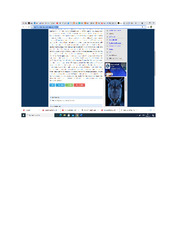| dc.contributor.author | Chiripasi, S.C. | |
| dc.contributor.author | Moreki, John Cassius | |
| dc.contributor.author | Nsoso, Shalaulani James | |
| dc.contributor.author | Letso, Moagi | |
| dc.date.accessioned | 2021-07-08T08:32:11Z | |
| dc.date.available | 2021-07-08T08:32:11Z | |
| dc.date.issued | 2013 | |
| dc.identifier.citation | Chiripasi, S. C., Moreki, J. C., Nsoso, S. J., & Letso, M. (2013). Effect of feeding mopane worm meal on mineral intake, retention and utilization in guinea fowl under intensive system. International Journal of Poultry Science, 12(1), 19-28. | en_US |
| dc.identifier.issn | 1682-8356 | |
| dc.identifier.uri | https://scialert.net/abstract/?doi=ijps.2013.19.28 | |
| dc.identifier.uri | http://researchhub.buan.ac.bw:80/handle/123456789/67 | |
| dc.description.abstract | This study investigated the mineral intake, utilization and retention of guinea fowl fed varying levels of mopane worm meal as a protein source under intensive system up to 13 weeks of age. Ninety-six day old keets were randomly assigned to four dietary treatments each having four replicates (n = 6/replicate). The four treatments were 3% fishmeal (control), 4.5% mopane worm meal, 9% mopane worm meal and 13.5% mopane worm meal. At 7 and 13 weeks of age, blood and faecal samples were collected from three randomly selected birds from each replicate and analyzed for minerals. At 13 weeks of age, all birds were sacrificed and left tibiae collected for determination of bone physical dimensions and mineral composition. Meat samples were collected from the thighs and decomposed by microwave digestion and analyzed for various minerals. Data were regarded as a split plot design with four dietary treatments and analyzed using the General Linear Model Procedures in Statistical Analysis System. Dietary treatment had no significant (P>0.05) effect on bone length. Bone weights for birds fed 9% mopane worm meal and bone widths for birds fed 4.5% mopane worm meal had lower weights (5.96 g) and widths (5.79 mm) than the other three treatments which did not differ significantly from each other. Bone mineral composition of guinea fowl fed diets with 4.5% mopane meal had significantly higher P (353.62 mg/l), Na (1332.96 mg/l) and K (1841 mg/l) contents than other treatment diets where the control and 13.5% mopane worm meal diets did not differ significantly. Generally, meat and blood mineral compositions of guinea fowl fed 4.5% mopane worm meal were higher than those fed on 13.5% mopane worm meal diet whilst control and 9% mopane worm meal were the same. Dietary treatments and age had a significant (P<0.05) effect on the daily mineral intake, faecal excretions and retention as percentage of mineral intake. Blood mineral composition and mineral retention increased with age as more minerals were required to support growth. Diets containing 3% fishmeal, 4.5% mopane meal and 9% mopane meal generally promote higher mineral intakes, bone physical development, bone and meat mineral compositions and retentions compared to 13.5% mopane worm meal. Results from the present study suggest that mopane worm meal can replace fishmeal up to 9% without negatively affecting mineral intake, retention and utilization. © Asian Network for Scientific Information, 2013. | en_US |
| dc.language.iso | en | en_US |
| dc.publisher | Asian Network for Scientific Information | en_US |
| dc.relation.ispartofseries | International Journal of Poultry Science;Vol. 12 (1):19 - 28, 2013 | |
| dc.subject | Bone dimensions | en_US |
| dc.subject | Mineral intake | en_US |
| dc.subject | Mineral retention | en_US |
| dc.subject | Mopane meal | en_US |
| dc.subject | Utilization | en_US |
| dc.title | Effect of feeding mopane worm meal on mineral intake, retention and utilization in guinea fowl under intensive system | en_US |
| dc.type | Article | en_US |

